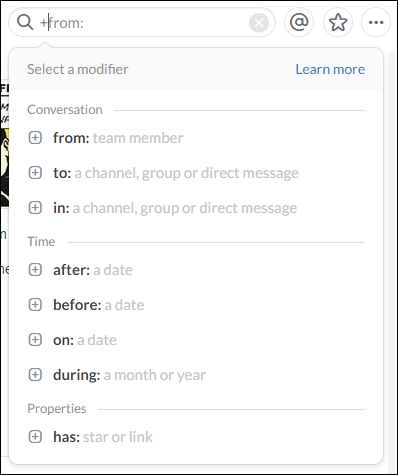

- #Type2phone send keycode with modifier exampe how to
- #Type2phone send keycode with modifier exampe driver
- #Type2phone send keycode with modifier exampe software
- #Type2phone send keycode with modifier exampe code
- #Type2phone send keycode with modifier exampe Pc
To communicate that combination to the PC or Mac. Would need to be set back to zero if the next nd_now() shouldĪfter you have set the normal and modifier keys, use nd_now() To release a key, you must set it to zero.
#Type2phone send keycode with modifier exampe code
However, you can use the 6 keys in any way you like.įor example, this code would send keys A, B, C, D, E and F, all pressed at once. Six keys are always tranmitted by the USB keyboard. set_modifier( MODIFIERKEY_CTRL | MODIFIERKEY_ALT) To press more than one modifier, use the logic OR operator. If you want no modifier keys pressed, use a zero. Keys are special, and can only be used with t_modifier(). Or the "clover key" (Macintosh), usually located to the side of the space bar.

There are 4 modifier keys: Shift, Alt, Ctrl, and GUI. Lifting off the key and its spring were returning it to the resting position). When micro managing, you need to send a zeroįor each key you've pressed to cause that key to be released (as if a finger were
#Type2phone send keycode with modifier exampe driver
To create the condition of a key held down similarly to a human typing.Īuto-repeat is done by the driver on your PC or Mac, so if you have a longĭelay between pressing and releasing a normal key, the auto-repeat feature may You can use delay() or write code to check millis() between calling nd_now(), Of keys you want pressed (and zero for the ones you want not pressed), and then To micro manage the keyboard, you use functions to set which combination The USB keyboard can have up to 6 normal keys and 4 modifier keys pressed at the
#Type2phone send keycode with modifier exampe software
You are very directly controlling the actual key codes without any extra software The media and system keys are not supported. Represent the location of a key on the USA English keyboard layout. Only key codes may be used with the Micro Manager functions.


Used by the USB communication sent to your PC. The "Micro Manager Way" allows you to exactly control the 6 possible key slots Normally Keyboard.press(key) and Keyboard.release(key) are sufficient, but The micro manager way requires more effort but gives you complete control. Here is a very simple example, using Keyboard.print(). With all the same control as Serial.print(). You can print strings, numbers, single characters Keyboard.print() works the same way as Serial.print(), except the message There are two ways you can make your Teensy send USB keystrokes. Which your computer will recognize as coming from a standard USB keyboard. When you select "USB Keyboard" from the Tools -> USB Type menu, the Teensyīecomes a USB keyboard and mouse while running your program. MsgBox("Pressed " + keystrokes can quickly ruin your program. If ((Control.ModifierKeys And Keys.Shift) = Keys.Shift) Then Public Sub TextBox1_KeyPress(ByVal sender As Object, _īyVal e As KeyPressEventArgs) Handles TextBox1.KeyPress MessageBox.Show("Pressed " + Keys.Shift) If ((Control.ModifierKeys & Keys.Shift) = Keys.Shift) Public void TextBox1_KeyPress(object sender, KeyPressEventArgs e) MessageBox::Show("Pressed " + Keys::Shift.ToString()) If ((Control::ModifierKeys & Keys::Shift) = Keys::Shift) Void textBox1_KeyPress(Object^ sender, KeyPressEventArgs^ e)
#Type2phone send keycode with modifier exampe how to
The following code example shows how to determine whether the SHIFT key is pressed within a KeyPress event handler. Use the bitwise AND operator with the ModifierKeys property and a value of the Keys enumeration to determine whether a particular modifier key is pressed. Visual Basic programmers can also access key information through the Keyboard property To determine which modifier key was pressed Similarly, to test for CTRL and ALT as modifiers you should use the Control and Alt values, respectively. For example, the SHIFT key is represented by Shift, ShiftKey, RShiftKey and LShiftKey The correct value to test SHIFT as a modifier key is Shift. The Keys enumeration offers variations of each modifier key, so it is important that you perform the bitwise AND with the correct value. In either case, you must perform a bitwise AND of the appropriate Keys value and the value you are testing. In this case, you must use the ModifierKeys property of the Control class. However, if you are handling the KeyPress event or a mouse event, the event handler does not receive this information. Alternatively, the KeyData property of KeyEventArgs specifies the character that was pressed as well as any modifier keys combined with a bitwise OR. If you handle the KeyDown event, the Modifiers property of the KeyEventArgs received by the event handler specifies which modifier keys are pressed. For example, if the letter S is pressed, this may simply cause an "s" to appear on the screen, but if the keys CTRL+S are pressed, the current document may be saved. When a modifier key is pressed in combination with other keys, or with mouse clicks, your application can respond appropriately. When you create an application that accepts the user's keystrokes, you may also want to monitor for modifier keys such as the SHIFT, ALT, and CTRL keys.


 0 kommentar(er)
0 kommentar(er)
